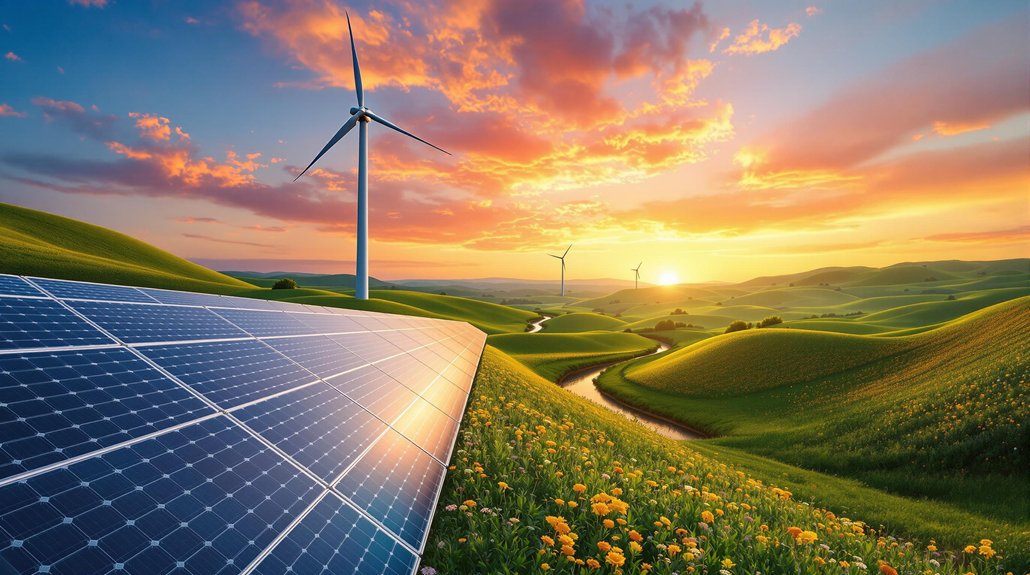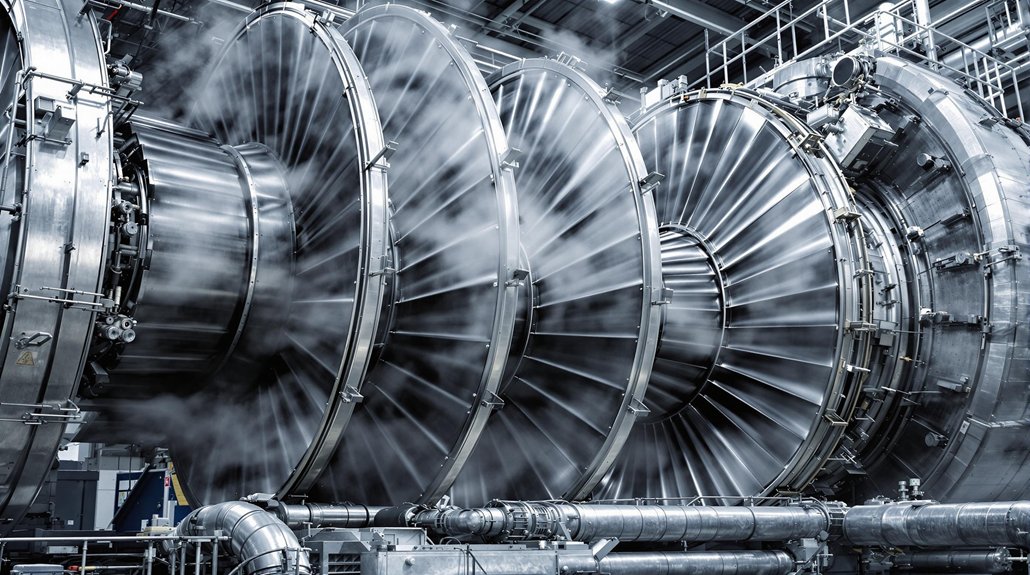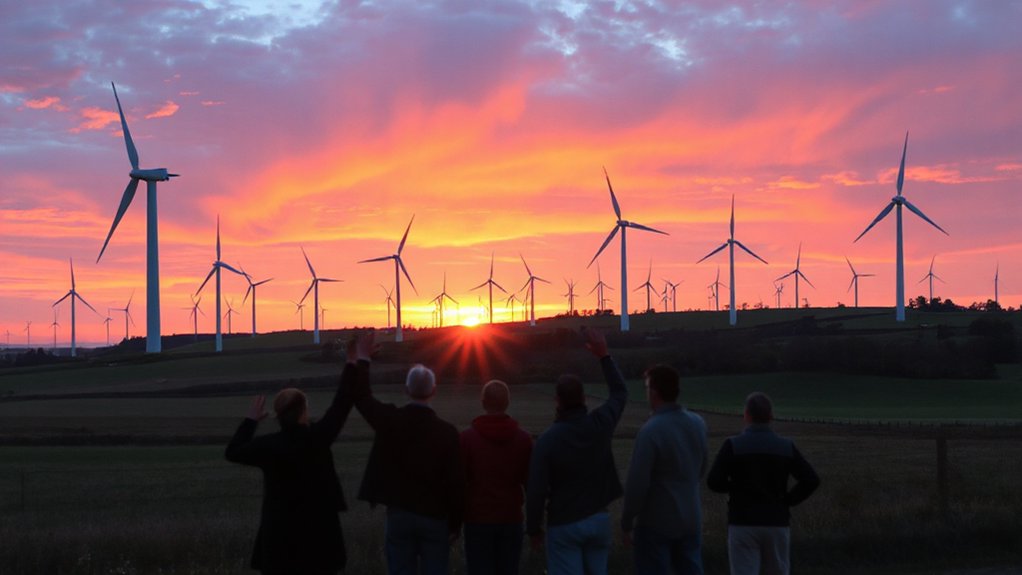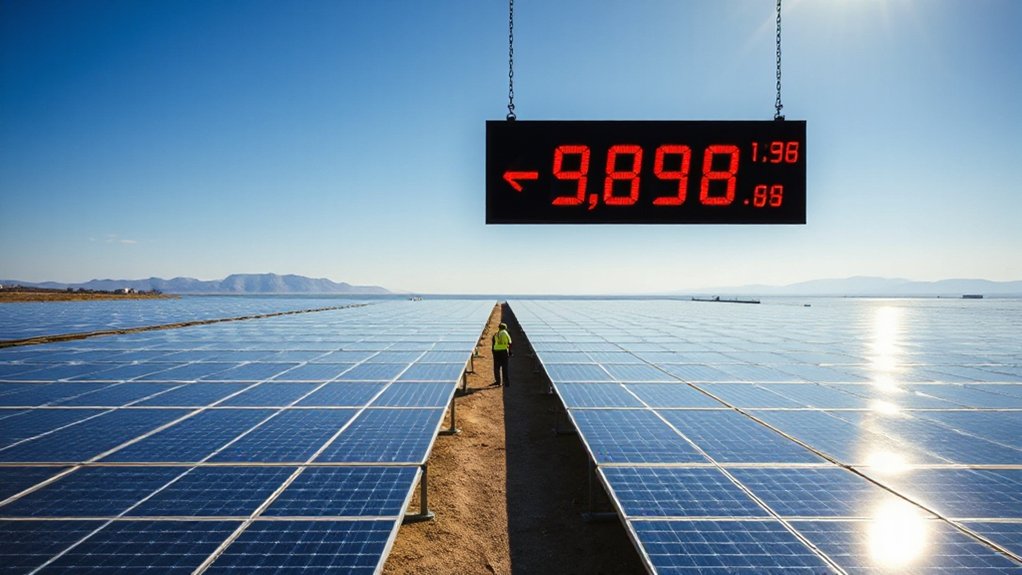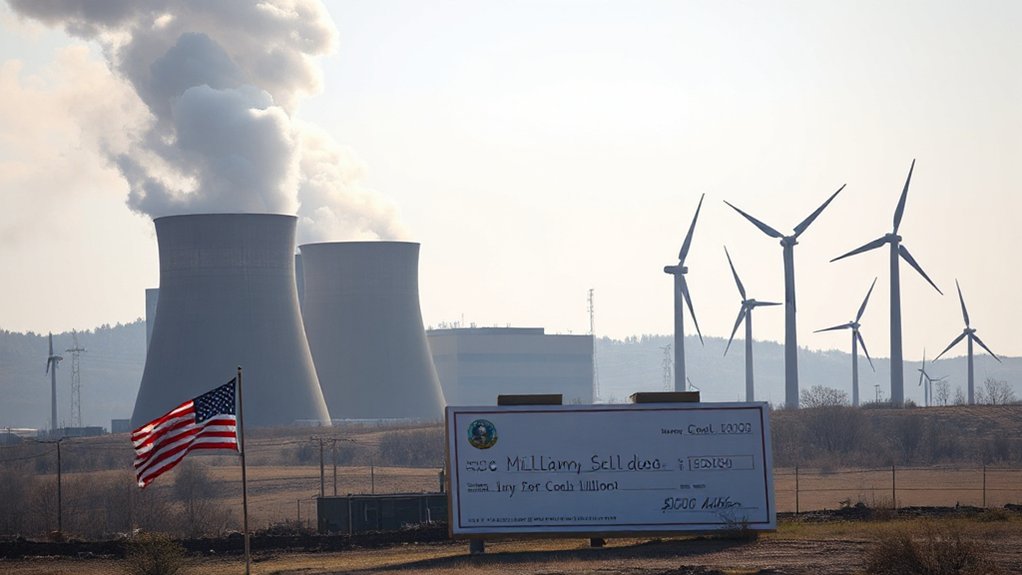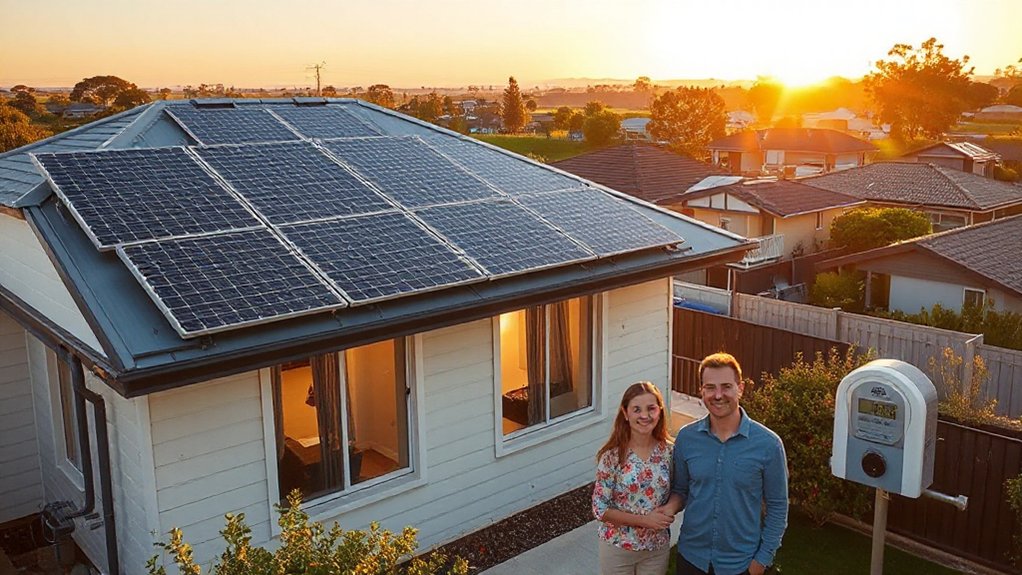Wind turbines come in several distinct flavors, each with its own quirks and capabilities. The classic three-blade horizontal axis turbines dominate wind farms, converting up to 50% of wind energy into power. Vertical axis types, looking like giant egg beaters, handle urban winds better. Offshore monsters can pump out 14 MW, while small turbines keep farms humming. Some wild new designs even float in the sky – there’s more to these wind-catchers than meets the eye.
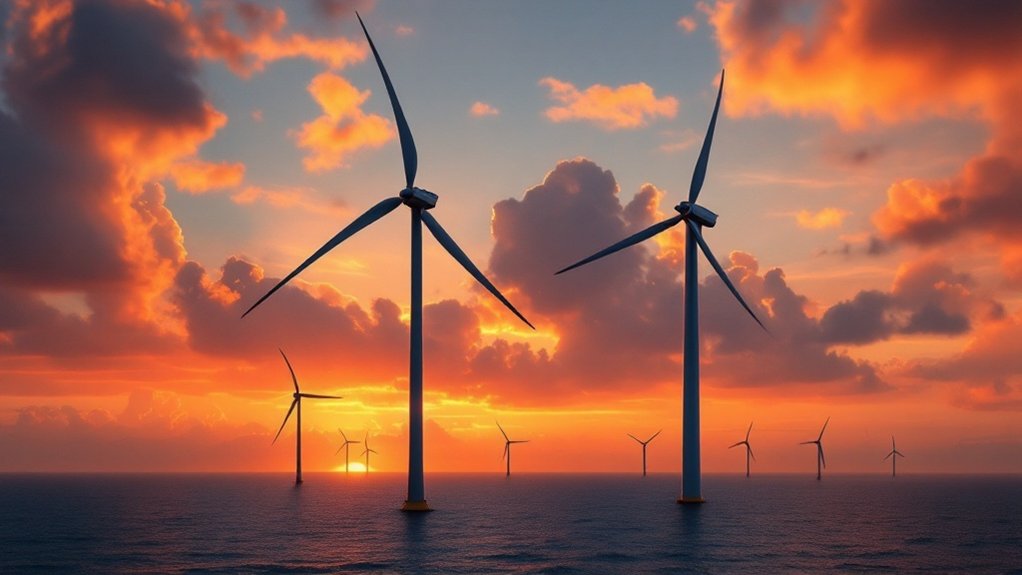
While most people picture a classic three-bladed giant spinning on the horizon, wind turbines come in a surprising variety of shapes and configurations. The traditional design, known as Horizontal Axis Wind Turbines (HAWTs), dominates commercial wind farms for good reason – they’re efficient powerhouses, converting up to 50% of wind energy into electricity. These familiar giants can now generate a whopping 15 MW of power. Not too shabby for a glorified fan. Modern turbines can convert up to 40% of wind’s kinetic energy into usable electricity.
Wind power isn’t just giant pinwheels anymore – modern turbines are engineering marvels that transform nature’s breath into megawatts of clean energy.
But there’s a rebel in the wind energy family: the Vertical Axis Wind Turbine (VAWT). Looking more like modern art than power equipment, these turbines spin like a merry-go-round gone wild. They’re perfect for urban environments and can handle turbulent winds without throwing a fit. Sure, they’re less efficient than their horizontal cousins, but they don’t need to turn into the wind to work. Sometimes, being different has its perks. The Savonius and Darrieus designs are common types of VAWTs.
Offshore turbines take things to a whole new level – literally. These marine monsters can exceed 14 MW and access stronger winds while keeping the “not in my backyard” crowd happy. With 73,000 wind turbines currently operating across the United States, they generate enough power for more than 46 million homes.
Meanwhile, small wind turbines keep things modest, perfect for farms and homes. They’re like the practical younger sibling who doesn’t need to show off.
The innovators aren’t done yet. Airborne wind turbines are the dreamers of the bunch, floating high in the sky like kites on steroids. They’re still experimental, but the potential is exciting.
Direct drive turbines took a different approach – they ditched the gearbox altogether. Fewer moving parts mean fewer headaches, though they’re heavier and pricier upfront.
For those who can’t make up their minds, hybrid wind turbines combine wind power with other renewable sources. It’s like having your cake and eating it too – more consistent power output and flexibility for remote locations. These systems prove that sometimes the best solution isn’t choosing one option, but combining the best of multiple approaches.

